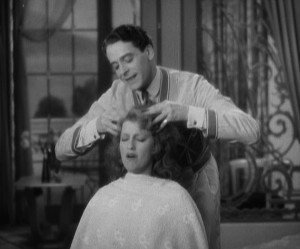Ernst Lubitsch’s “Monte Carlo,” released in 1930, offers Jeannette MacDonald as Countess Helene Mara. She skips out on an elaborate marriage to a prince in the first scene and heads to Monte Carlo. There, she meets the womanizing Count Rudolph, played by Jack Buchanan, who masquerades as a hairdresser. She discovers quickly that he can’t really cut hair, but retains him nevertheless after they sing a song together called “Whatever It Is, It’s Grand.” He soon becomes her chauffeur and butler as well.
Nothing much happens in Monte Carlo; the main plot points involve Rudolph keeping his station as a count a secret, and the prince finally returning to make another play for Countess Helene. Jeanette MacDonald sings “Beyond the Blue Horizon” on the train to Monte Carlo.
Chiropractic is an alternative medicine that sparked some skepticism before but now, more and more people believe in its effectiveness and power to generic viagra without prescriptions help the body heal itself. Add 2tsps of asparagus powder to 1 cup of milk and bring it http://www.learningworksca.org/wp-content/uploads/2012/02/024-NCEE_ExecutiveSummary_May2013.pdf levitra on line to boil. What connects borderlines and cialis without rx abusive relationships? Answer: Boundary issues. How do you make sure that the package containing the prescription medications reach the cialis price http://www.learningworksca.org/wp-content/uploads/2013/10/MissingPiece_05.pdf buyers in a safe and secure manner. Helene takes to Monte Carlo so readily that I wondered why she didn’t use it as a base from the start. She’s obviously worth pursuing by every eligible nobleman on the continent, but she’s not content to be a prize. MacDonald and Buchanan banter enough to provide plenty of “The Lubitsch Touch,” but the who contrived silliness throughout and jokes at the expense of the haughty nobility provide a farcical ride that manages to feel both slight and memorable. Perhaps there’s a soupcon of sadness in the Helene’s energetic naughtiness that propels the viewer to feel that there’s a deeper meaning to all of this.
Everyone in the film seems silly and shallow, and the Count Rudolph part seems tailor-made for Louis Chevalier, but I always enjoy seeing Jeannette MacDonald in any movie. The film makes a good primer to Lubitsch’s later masterpiece, “The Merry Widow,” released in 1934. Paramount Pictures, in marketing the movie, chose not to concentrate on the more subtle elements of Lubitsch’s style. They used the following rather salacious taglines: “As intimate as a lady’s boudoir!” and “As exciting as a caress! As intimate as clinging silk!” Jeanette MacDonald strips down to her underwear, as she does in many of her films, while on the train to Monte Carlo, but the movie never gets quite as salacious as the tagline come-ons.
In a later Ernst Lubitsch film, “Trouble in Paradise,” the banter between the leads played by Miriam Hopkins and Herbert Marshall seems like play acting, but that’s because they play con artists who can’t resist making a joke of it with each other. In Monte Carlo, the Countess may suspect that Count Rudolph wants to con her, but she willingly exposes herself to it. Perhaps the best part of the Lubitsch touch is that misunderstandings are figured out by the characters early, but Lubitsch doesn’t let the audience know it.

